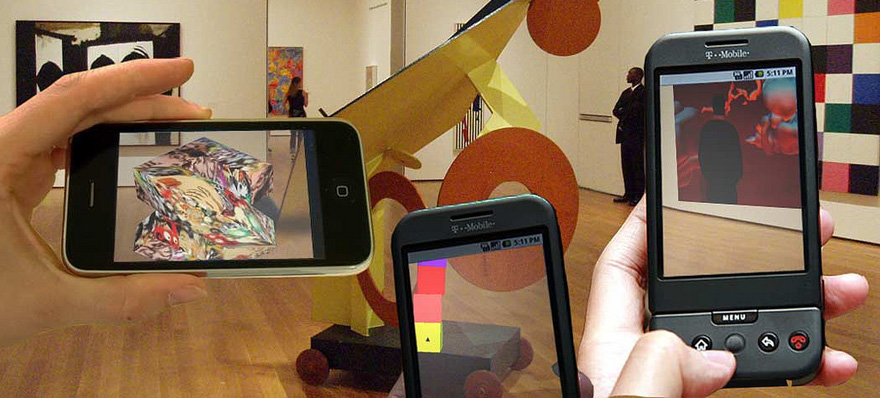By Pritham Marupaka
With the advent of social networks, smartphones and increasingly powerful web services, our digital existence has grown immensely in recent years. From shopping to attending a conference call, technology enables us to connect with the people and resources we need in a matter of seconds. Though we’re more connected than ever before, there has always been a line between our virtual presence and our real existence. Augmented reality (AR) technology aims to blur that line, if not erase it completely.
When working as designed, augmented reality merges the real and digital worlds by superimposing virtual information onto everyday objects. Google Glass is a prominent example of an augmented reality device, with potential applications in numerous areas, including medicine, education and the military.
Over the last few years, augmented reality technology has shown significant growth. Global market research firm MarketsandMarkets’ March 2014 report “Augmented Reality & Virtual Reality Market“ predicts the Compound Annual Growth Rate of AR at around 15% — making augmented reality a $1 billion market by 2018.
One of the more popular applications of AR is interactive advertising. UK-based start-up Blippar, for example, utilizes AR technology to augment print media. Users with Blippar-enable smartphones can point their cameras toward supported advertisements to see previously hidden interactive content (video, text and images). Even in today’s ad-saturated culture, Blippar has been downloaded more than 4.7 million times.
Augmented reality marketing appeals to some advertisers for such its ability to captivate people and increase the exposure to their products. Data gathered by Blippar shows that people engage with an advertisement for four and a half minutes on average, significantly higher than traditional print, internet or television marketing. Research done by UK-based augmented reality firm Hidden Ltd reveals that the likelihood of a parent to buy a toy when advertised with augmented reality is 29% higher than when advertised with 2D print advertisements.
Beyond marketing, AR systems are applicable in various other fields. Engineers at the Battlefield Air Targeting Man-Aided (K)nowledge lab (BATMAN) are leveraging Google Glass technology to improve communication within the Air Force. Augmented reality applications enable pilots and air traffic controllers to acquire increased situational awareness and instant updates without losing track of their immediate tasks; the use of AR technology here is highly pragmatic, addressing a vital issue.
The technology is also quickly spreading to the educational sphere, as augmented education apps enable students to become more actively involved in the lessons. Education blogger Todd Nesloney, a fifth grade Texan school teacher, notes that, “Educators know that learning deepens, not just through reading and listening, but also through creating and interacting. With augmented reality products … students manipulate and combine elements … right from their Android or iOS devices, rather than just reading about them in a textbook.” Aurasma, the augmented reality development arm of Hewlett Packard, identifies twenty percent of its users as educators or students, which makes it clear that we can expect to see more augmented reality applications enriching students’ education in the years to come.
There are a few issues to be addressed regarding augmented reality before it can move forward and increase its impact on day to day lives. The first is the current state of AR technology. Though it has developed greatly from its inception, the applications still need a lot of work to be thorough and accurate. Technological limitations in computer vision and image processing are some of the factors that need to be improved for better AR devices. Privacy concerns must also be taken into consideration. With the immense amount of data to be collected through AR devices and stored into corporate databases, certain data governance regulations must be set in place to ensure consumers feel safe using the applications.
There is no doubt that augmented reality has a bright future and the potential to greatly impact everyday transactions and interactions. More companies and organizations are beginning to embrace this alternative to traditional media and there is greater academic involvement in the field given its vast utility. Moving forward, it is expected that AR devices will play an integral role in educational, military and industrial settings. Privacy and security concerns, however, must be considered with the advancement and dissemination of augmented reality technology.

Leave a Reply
You must be logged in to post a comment.